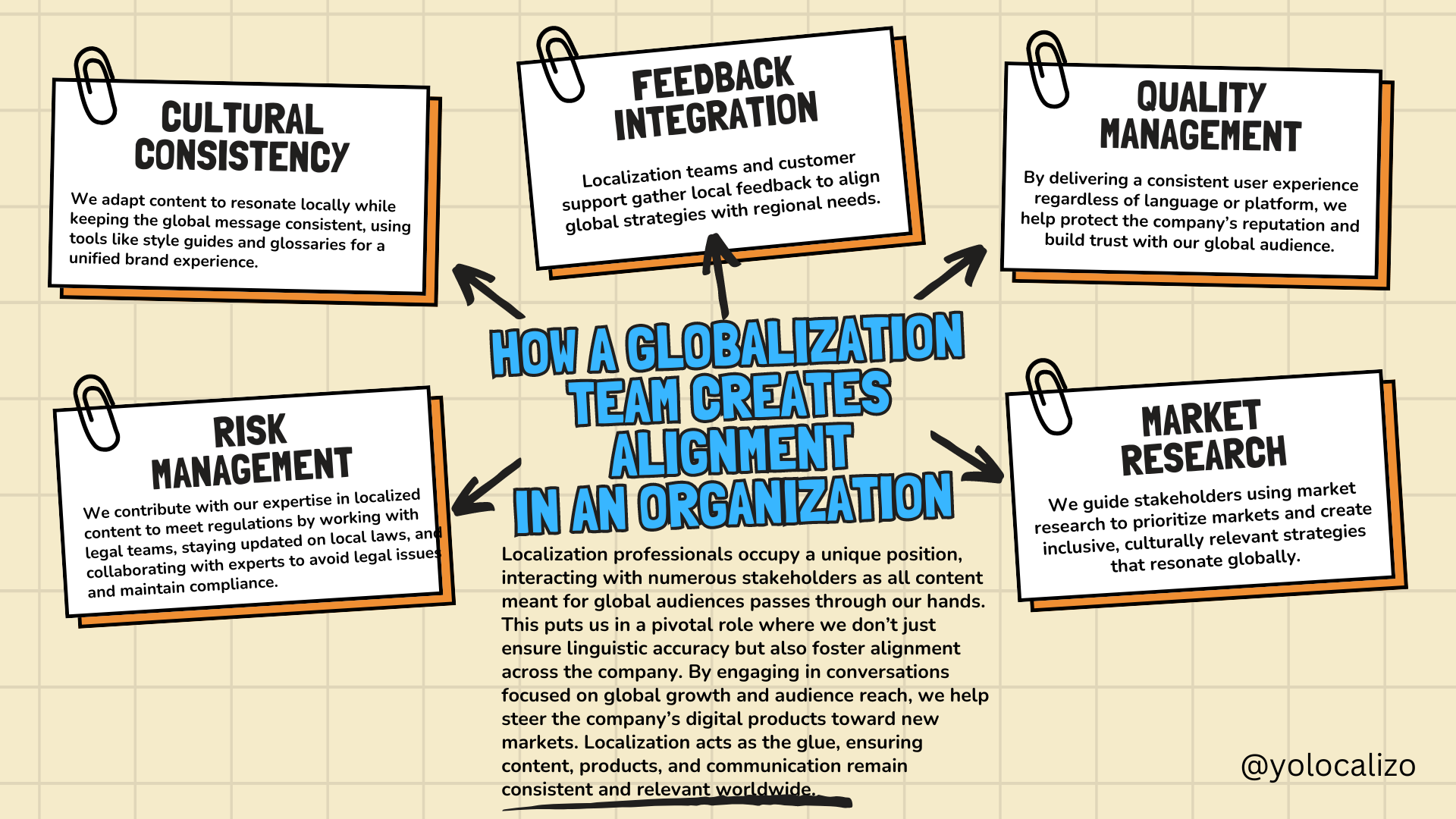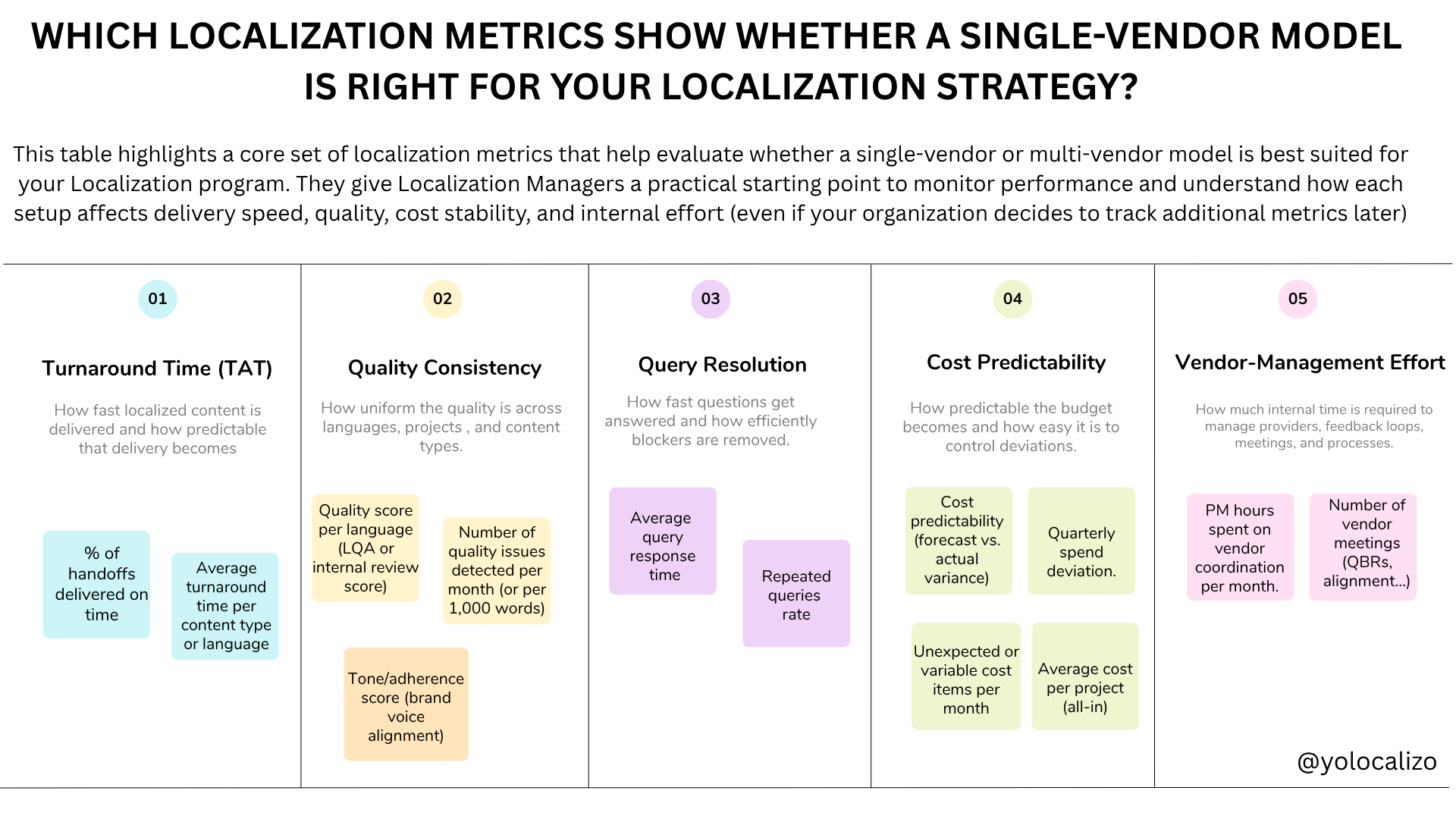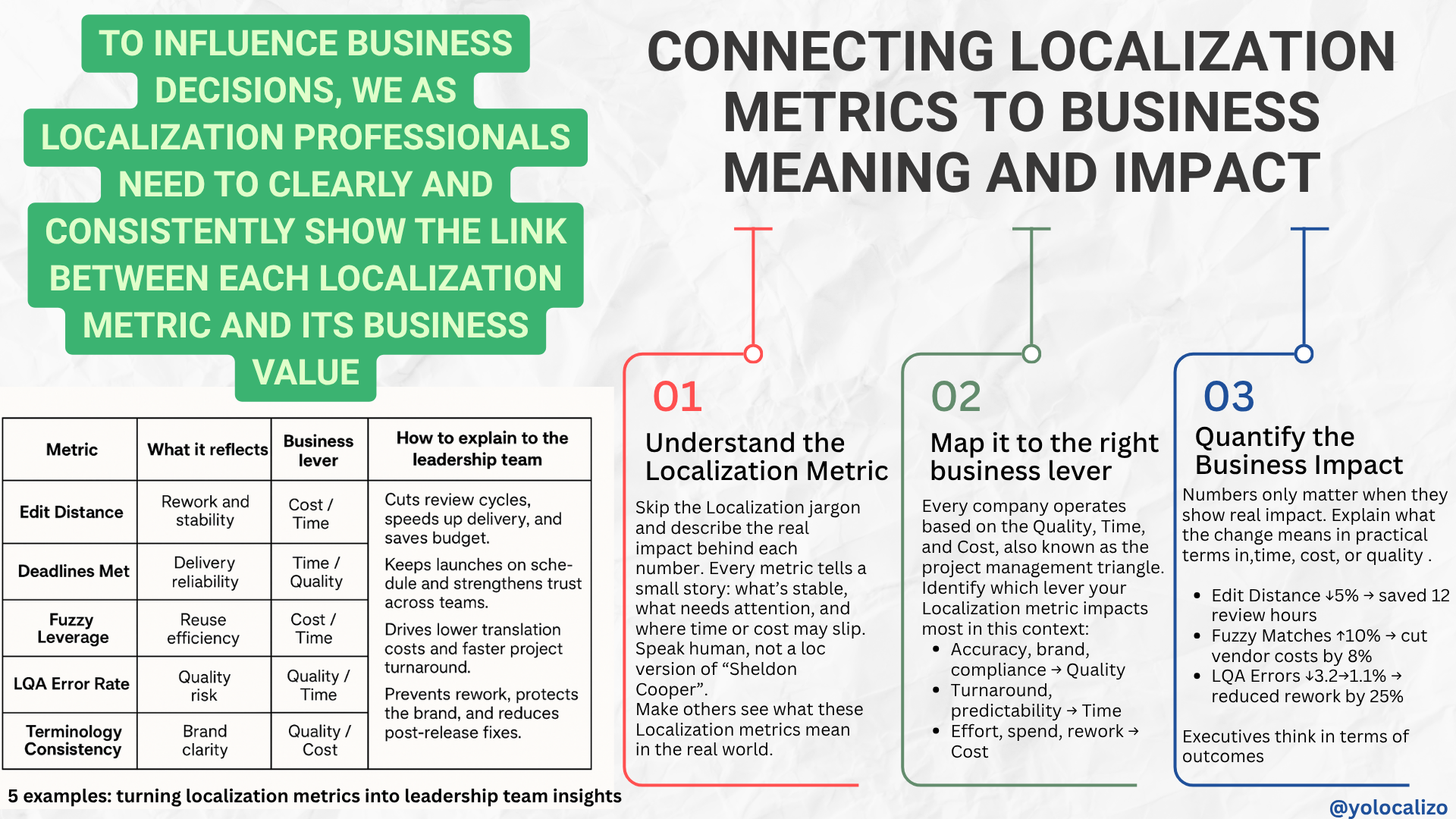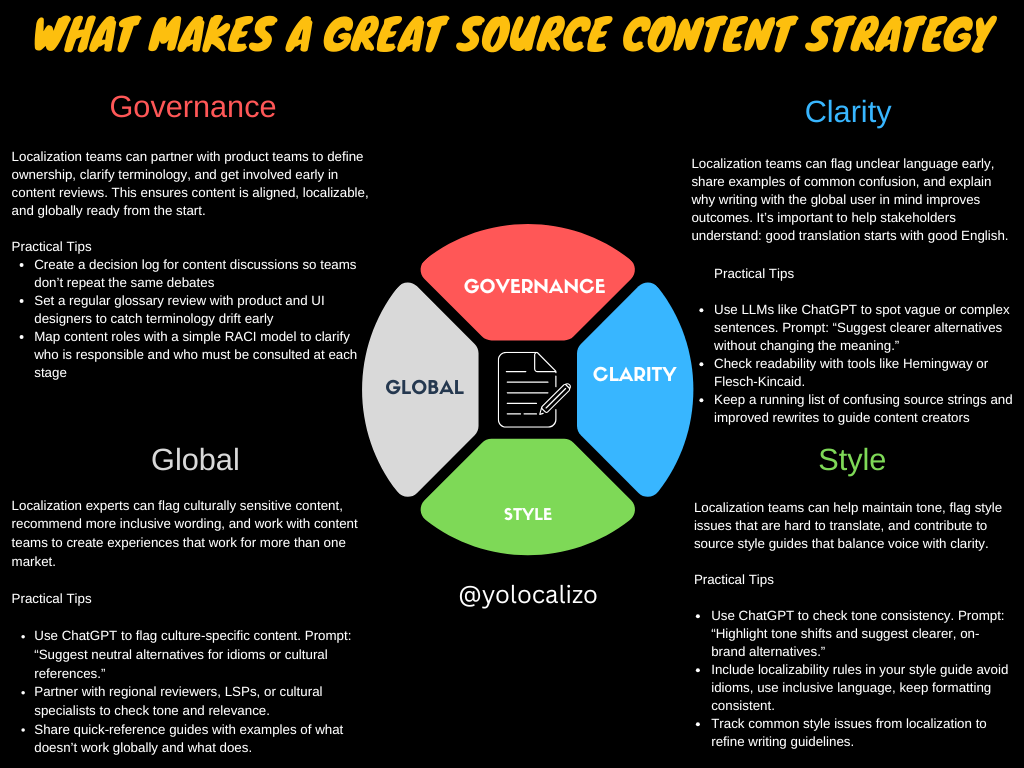The role of Localization in shaping content source strategy
or why localization success starts like a good golf swing: with the right stance….
A few years ago, I started learning to play golf. At first, it was a way to take a break from staring at a screen all day, and also because I find golf courses peaceful. They’re beautiful places, with lakes, trees, ducks… very calming. But, well, life happened. And when you become a parent, your free time just disappears. In my case, one of my kids slept terribly, waking up several times during the night. I was exhausted. So in the afternoons, instead of going to practice my swing, what I really wanted was a nap!
Some glimpses of my learn “golf pick up hobby” again
Now, years later, my kids are older, and I finally feel like I have a bit more control over my life again. So I picked up golf again. I even started lessons.
And during one of those recent lessons, my instructor stopped me mid-swing and said:
“Wait, don’t even think about hitting the ball yet. Check your grip, your knees, your balance. If your position is off, the swing won’t work,no matter how good your technique is. You have to make sure you’re getting it right from the beginning.”
And I smiled. Because that’s exactly what I’ve been saying in localization for years.
What Makes a Great Source Content Strategy
Click HERE to download the infographic
In our industry, we often focus on the output: how good the translation sounds, how fast we can deliver it, or how much linguistic quality assurance we can automate. But all that comes after the “swing” starts. Just like in golf, localization success begins long before the first word is translated, it begins with the source content.
If the source content is inconsistent, overly complex, full of idioms, or lacks context, even your best translators and top-performing LSPs will struggle. And when that happens, be prepared for slower turnaround, more rework, higher costs, and most importantly,content that doesn’t connect with your global audience.
Despite this, many companies still overlook source content strategy,probably because it doesn’t show up directly in localization metrics. But that’s a big mistake. Good source content does more than get the process started, it boosts quality, speeds up delivery, and makes your localization efforts scale more smoothly.
Four Common Red Flags That Signal a Weak Foundation
As localization professionals, we often inherit content that wasn’t written with us,or our audiences,in mind. And I’m not saying this to be dramatic, I’ve seen it many times. Poor source content causes many problems later in the process: too much back and forth between translators and reviewers, low LQA scores that unfairly blame translators when the real issue started earlier, and messy translation memories full of inconsistent terms. Often, the problem only becomes clear when deadlines are missed or teams spend too much time fixing things. A typical example? Someone says, “this just sounds weird in German,” but there is no clear reference to explain why. So instead of solving the issue, teams waste time discussing personal opinions
If this feels familiar, the solution isn’t more post-editing.
What you need is a better setup.
The Four Foundations of Great Source Content
Think of it as your pre-swing checklist.
As mentioned earlier, in golf, everything starts with the right stance, grip, and balance. If those are in place, the swing has a much better chance of being smooth and accurate. It’s the same with localization. When elements like governance, clarity, style, and global mindset are built into the process from the start, everything that follows becomes easier and more consistent.
1. Governance
Source content comes from many places: product teams, marketing, technical writers, UI designers even developers. That’s why it’s critical to define who owns what.
Who decides on final phrasing?
What’s the process when teams disagree?
Who manages the glossary and approves new terms?
Clear governance reduces friction and creates a shared reference point before localization even begins.
How a Localization Team Can Help
Localization teams can partner with product teams to define ownership, clarify terminology, and get involved early in content reviews. This ensures content is aligned, localizable, and globally ready from the start.
Practical Tips
Create a decision log for content discussions so teams don’t repeat the same debates
Set a regular glossary review with product and UI designers to catch terminology drift early
Map content roles with a simple RACI model to clarify who is responsible and who must be consulted at each stage
2. Clarity
If the source is ambiguous, it will be even more confusing once translated. That’s why clarity is so important.
Use plain, direct language
Avoid passive voice
Break long sentences into shorter ones
Make sure it’s always clear who or what you’re referring to
When the content is clear and direct, it’s easier to translate accurately and leaves less room for misunderstandings.
How a Localization Team Can Help
Localization teams can flag unclear language early, share examples of common confusion, and explain why writing with the global user in mind improves outcomes. It’s important to help stakeholders understand: good translation starts with good English.
Practical Tips
Use LLMs to spot complexity: Run content through ChatGPT, for example you might use a prompt like:
“Highlight any vague, overly complex, or unclear sentences. Suggest simpler alternatives that preserve meaning.”
Use readability tools like Hemingway or Flesch-Kincaid to measure how easy your text is to understand
Build a library of confusing strings and how to fix them,use real examples to align with content creators.
3. Style
Style means tone, voice, and consistency. But it also means writing in a way that respects localizability.
Avoid wordplay unless it’s worth the localization effort
Give context for sensitive or nuanced messaging
Stay on-brand, but keep meaning clear
A strong, clear style makes it easier for localization teams to maintain your brand in every language.
How a Localization Team Can Help
Localization teams can help maintain tone, flag style issues that are hard to translate, and contribute to source style guides that balance voice with clarity.
Practical Tips
Use ChatGPT to audit tone with a prompt like:
“Does this text keep a consistent tone and vocabulary? Highlight any shifts and suggest adjustments that match a confident, friendly brand.”
Create a style guide that includes localizability rules: idioms to avoid, inclusive language, and format consistency
Log recurring issues raised during localization and use them to improve writing guidelines
4. Global Mindset
This might be the most underestimated,but most powerful,pillar.
Don’t use slang, pop culture, or region-specific jokes
Think beyond English-speaking audiences
Don’t assume your readers share your holidays, references, or humor
Writing with a global audience in mind reduces the need for last-minute localization workarounds.
How a Localization Team Can Help
Localization experts can flag culturally sensitive content, recommend more inclusive wording, and work with content teams to create experiences that work for more than one market.
Practical Tips
Use ChatGPT to scan for culture-specific content with this prompt:
“Identify any idioms, culture-specific references, or cultural assumptions in this content. Suggest neutral alternatives.”
Partner with regional reviewers or LSPs or culture specialist to validate content for tone and appropriateness
Create quick guides showing which references (like sports metaphors or holiday names) don’t work globally,with side-by-side alternatives that do
In Summary: Fix Your Stance First
Many localization teams think source content is “not their job.” But shaping content upstream is one of the most effective ways to impact quality, scalability, and localizability.
Whether you’re learning golf or scaling your localization program, it’s the same principle:
If the setup is wrong, everything else becomes harder.
We’re often expected to fix problems at the end of the process. But what if we could prevent them before they start?
Better source content means fewer headaches, faster delivery, and higher quality, and it all comes down to four things: governance, clarity, style, and a global mindset.
So before you take that first swing… check your stance.
Because every great localization story starts with great source content.
@yolocalizo


















This feels like a pivotal moment. Localization teams are being asked to support more markets, move faster, use AI responsibly, and show impact, not just output. Expectations are higher than ever, but many teams are still trained mainly for execution. We are strong at delivering localization work, yet we often struggle to move from output to outcome and to clearly explain the impact of what we do.